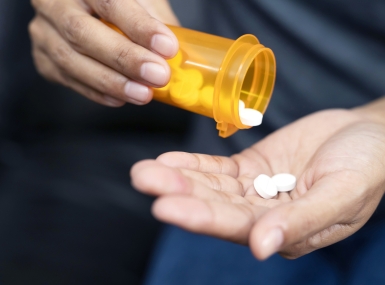New CDC data reveals rates of poor mental health and suicidality on the rise for youth in the U.S.
Upcoming Events
Related News

Key Takeaways
On February 13, 2023, the Centers for Disease Control and Prevention (CDC) released the Youth Risk Behavior Survey Data Summary & Trends Report: 2011-2019, which provides data on health-related behaviors that contribute to the leading causes of death amongst youth and adults. This national, school-based survey is conducted every two years for public and private school students in 9th-12th grade and covers questions related to substance use, mental health, suicidality, sexual behaviors and experiences of violence.
This most recent report highlights rising rates of poor mental health and suicidality amongst our youth population, demonstrating a critical need to bolster federal support for counties in order to address this growing mental health crisis in our youth.
Some key findings from the survey:
- 29 percent of survey respondents felt they had poor mental health in the last 30 days.
- 42 percent of students felt so sad or hopeless for the past 2 weeks that they could not go about their usual activities.
- Over half (57 percent) of female students felt persistent feelings of sadness (An increase from 46 percent in 2019)
- 29 percent for males (An increase from 26 percent in 2019)
- 69 percent of LGBTQ youth
Further findings related to suicidality:
- In 2021, 22 percent of high school students seriously considered attempting suicide.
- Nearly 1 in 3 (30 percent) of female students considered attempting suicide.
- 45 percent of LGBTQ+ students considered attempting suicide and 22 percent attempted suicide.
- Female students were more likely than male students to attempt suicide. In 2021, 13 percent of female students attempted suicide, as compared to 7 percent of male students.
- Higher rates of attempted suicide for American Indian/Alaskan Native and Black students. Survey data reports that American Indian/Alaskan Native and Black youth were more likely to attempt suicide, with 16 percent and 14 percent respectively, than Asian (6 percent), Hispanic (11 percent), and White (9 percent) students.
To learn more about CDC’s Youth Risk Behavior Survey, view here.
NACo continues to advocate for county behavioral health priorities at the federal level, as well as provide access to resources and opportunities for counties to work with intergovernmental partners to develop effective solutions to mental health challenges in local communities. To further emphasize our commitment to responding to the national mental health crisis, NACo recently announced a new Commission on Mental Health and Wellbeing, bringing together 14 county leaders from across the country. This group, unveiled at NACo’s Legislative Conference, will work to elevate the critical role that counties play in providing high-quality, accessible mental health services, showcase county innovations and solutions and outline the intergovernmental and public-private partnerships required to reimagine and strengthen our nation’s mental health policies, programs and practices.
Click here to learn more about the commission’s priorities and proposed work.
Additional Resources
- Recording: NACo Summit on Mental Health Solutions
- NACo Blog: SAMHSA Releases New Survey Data on Rates of Mental Illness and Substance Use Disorder in the U.S.
- Behavioral Health Matters to Counties
- NACo Policy Brief: Fund Local Crisis Response Efforts
- NACo Policy Brief: Enhance Counties’ Ability to Prevent and Treat Mental Illness and Substance Abuse Disorders
Featured Initiative
NACo Commission on Mental Health and Wellbeing
(2023-2024) Counties increasingly handle direct mental health services, acting as the safety net for vulnerable residents and operating crisis lines, hospitals and detention centers. NACo’s Commission on Mental Health and Wellbeing developed reports and united county leaders to address the mental health crisis through four key policy priorities.

Related News

U.S. Department of Health and Human Services announces major restructuring
On March 27, the U.S. Department of Health and Human Services (HHS) announced a sweeping reorganization that will consolidate agencies, shift key programs under a new framework and eliminate thousands of positions. This change brings HHS in line with President Trump's Executive Order, “Implementing the President’s ‘Department of Government Efficiency’ Workforce Optimization Initiative.”

U.S. Department of Health and Human Services moves to reduce public comment in rulemaking
On February 28, the U.S. Department of Health and Human Services (HHS) announced a policy change limiting public comment opportunities to only those required by law. Published in the Federal Register on March 3, the decision rescinds the “Richardson Waiver,” a 1971 directive from then-HHS Secretary Elliot Richardson that encouraged broader public input on regulations related to public benefits, grants and healthcare policies.

U.S. Department of Health and Human Services renews Public Health Emergency Declaration to address national opioid crisis
On March 18, the U.S. Department of Health and Human Services (HHS), under the direction of Secretary Robert F. Kennedy, Jr. renewed the public health emergency (PHE) declaration to address the ongoing opioid crisis, extending critical federal support for coordination, treatment expansion and research efforts. While overdose deaths have declined by 25.5 percent over the past year, synthetic opioids like fentanyl continue to drive fatalities, with approximately 150 Americans dying daily from overdoses.